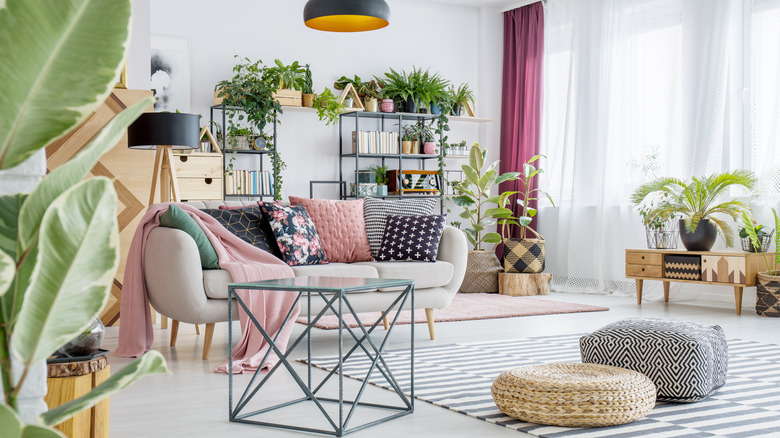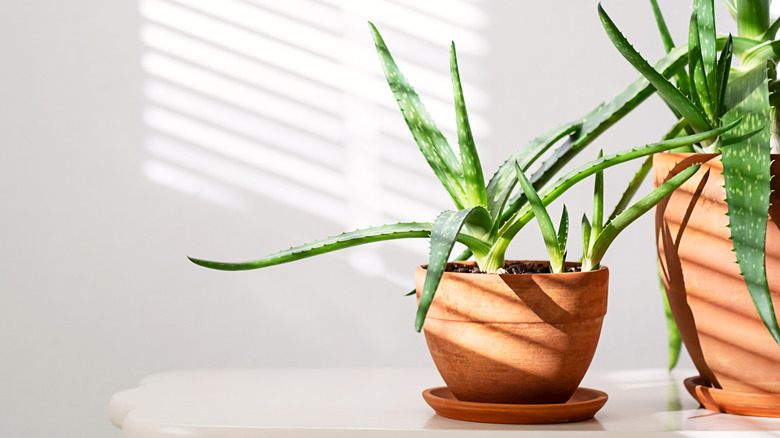The Healing Houseplant That Can Thrive With Low Levels Of Light
One of the most common problems when growing plants indoors is providing enough light. While all plants need light to grow, some need more than others, and for those sun-loving plants that need hours of full sun each day, it can be difficult to find the perfect spot inside. Fortunately, that doesn't mean you're entirely out of luck when it comes to houseplants. Instead, you can add plants that thrive in low levels of light, like aloe vera (Aloe vera).
Aloe vera is a common houseplant with a unique appearance and a role in traditional medicine. While more research is still needed to confirm its effectiveness – and it's important to consider its latex content – many people use the gel inside of aloe's leaves for skin-related concerns. In fact, you may have even seen commercial aloe gel marketed for sunburns. However, its reputation isn't the only reason it's such a popular indoor plant. Much of it has to do with aloe's easy-growing requirements, including its tolerance for low light conditions.
Although it is a succulent, aloe vera doesn't require full sun to grow. Instead, you can grow this eye-catching houseplant in partial shade conditions. This makes it a great choice for windows that receive direct sun only part of the day. Achieving the right light conditions for this plant is simple, and there are plenty of other tips to help you learn how to grow aloe vera indoors.
How to grow aloe vera indoors
When you have a plant that needs full sun to grow, you're often limited to south-facing windows for optimal sunlight. In some cases, you may still need to invest in a grow light for supplemental lighting if your window alone isn't enough. However, plants like aloe that tolerate partial shade offer more flexibility in their placement.
For the best results, aloe vera needs a minimum of two hours of sunlight each day, though it can tolerate over six hours of direct light. As a result, you'll want to choose a room that has a window facing south, west, or east. This is because north-facing windows don't provide any direct light. If your home doesn't offer the right lighting, a grow light can help fill the gap. Keep in mind that lower light conditions can result in aloe that is leggy, and if you notice this happening, you may need to move your plant to a brighter spot.
Lighting is one part of caring for aloe vera indoors. Because aloe vera can grow in temperatures ranging from 50 to 80 degrees Fahrenheit, indoor conditions often don't pose a problem. However, it is important to familiarize yourself with aloe's other needs. Even though aloe vera is one of the best succulents to grow indoors, it's still a succulent, which means dialing in the right watering routine can be challenging for beginners. Aim for deep but infrequent waterings that fully saturate the soil without leaving it waterlogged. Overwatering is a common gardening mistake, but letting the top layer of soil dry in between watering can help reduce this problem.

